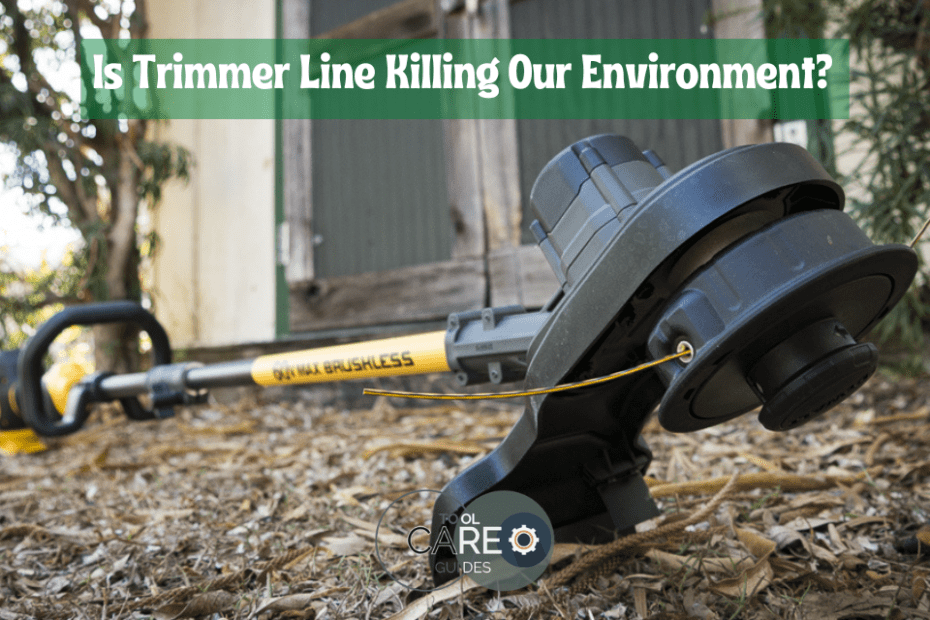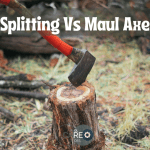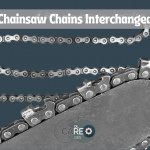Quick Overview of This Article
Trimmer line can be harmful to the environment due to its non-biodegradable composition and potential for water pollution. Trimmer line is often made of nylon or other synthetic materials that can take hundreds of years to break down, leading to long-term accumulation in landfills and natural habitats.
When trimmer line is used near bodies of water, it can easily be washed away and enter aquatic ecosystems, posing a threat to aquatic life and water quality. As responsible consumers, it is important to consider alternative and eco-friendly options for trimming and landscaping to mitigate the environmental impact of trimmer line usage.
Environmental Risks Associated With Trimmer Line Pollution
When it comes to maintaining the beauty and neatness of our outdoor spaces, using a trimmer line seems to be a necessary tool. However, have you ever considered the environmental risks associated with trimmer line pollution? In this section, we will explore the composition of trimmer line and the potential consequences it can have on the environment.
Trimmer Line Composition And Its Environmental Consequences
Trimmer line is typically made from high-density polyethylene (HDPE), which is a petroleum-based plastic. This lightweight and durable material allow it to effectively cut through grass and weeds. However, the production and disposal of HDPE contributes to several environmental hazards:
- HDPE is derived from crude oil, a non-renewable resource. Its production involves extensive energy consumption and the release of greenhouse gases, contributing to climate change.
- Improper disposal of trimmer line leads to its accumulation in landfills, where it can take several hundred years to decompose. This further exacerbates the issue of plastic waste and pollution.
Moreover, when trimmer line becomes worn or damaged during trimming, tiny plastic particles may be released into the environment. These microplastics can end up in bodies of water or soil, causing various environmental risks.
Bioaccumulation And Its Effects On Aquatic Life
The accumulation of trimmer line debris in bodies of water can have devastating effects on aquatic ecosystems. When microplastics enter waterways, they are often mistaken for food by marine organisms. Some of the resulting environmental consequences include:
- Accumulation of microplastics in the digestive systems of marine animals, leading to malnutrition, internal injuries, and even death.
- Disruption of the food chain as microplastics are ingested by smaller organisms, which are then consumed by larger predators.
- Potential transfer of toxic chemicals from microplastics to marine life, as these particles can act as carriers and concentrate pollutants.
These bioaccumulation effects not only harm marine creatures but also threaten the overall health and biodiversity of aquatic environments.
Soil Contamination And Its Impact On Ecosystems
Trimming operations often leave bits of trimmer line strewn across the ground. Over time, these plastic fragments can contaminate the surrounding soil and pose risks to terrestrial ecosystems. Here are some of the impacts associated with trimmer line soil contamination:
- Restriction of water and nutrient absorption by plants, leading to impaired growth and reduced crop yields.
- Disruption of soil microorganisms and other beneficial organisms, which play essential roles in soil fertility and ecological balance.
- Potential leaching of harmful chemicals from trimmer line fragments into the soil, further polluting the surrounding environment.
These consequences of trimmer line pollution underline the importance of responsibly handling and disposing of trimmer line debris to minimize its impact on ecosystems.

Alternatives To Conventional Trimmer Line
Eco-friendly Trimmer Line Options
When it comes to maintaining a tidy and well-manicured lawn or garden, a trimmer line is an essential tool for many homeowners and garden enthusiasts. However, conventional trimmer line materials can have a negative impact on the environment due to their non-biodegradable nature. The good news is that there are alternatives available that minimize the environmental harm while still providing effective trimming results. In this article, we will explore some eco-friendly trimmer line options that you can consider for your landscaping needs.
Biodegradable Trimmer Line: A Sustainable Choice
One of the most promising alternatives to conventional trimmer line is the use of biodegradable materials. These lines are specifically designed to break down naturally over time, reducing the risk of pollution and minimizing waste accumulation. Biodegradable trimmer line is typically made from organic materials such as cornstarch, plant fibers, or other sustainable resources. Its ability to decompose into natural elements allows for a more eco-friendly gardening experience.
Not only do biodegradable trimmer lines minimize environmental harm, but they also offer similar cutting performance to their non-biodegradable counterparts. They are strong, durable, and capable of effectively trimming grass and weeds without compromising on quality. This makes them an excellent choice for environmentally conscious individuals who want to maintain a well-groomed outdoor space without sacrificing sustainability.
Innovative Technologies For Reducing Environmental Impact
Aside from biodegradable options, there have been significant advancements in technology that aim to reduce the environmental impact of trimmer lines. Manufacturers and researchers are constantly working on innovative solutions to make trimmer lines more sustainable. For instance, some companies have developed trimmer lines made from recycled materials, such as plastic bottles or fishing nets, to reduce waste and promote recycling efforts.
Furthermore, there are trimmer lines incorporating aerodynamic designs that enhance efficiency and reduce energy consumption. These innovative designs can minimize the amount of time and energy required to complete trimming tasks, thereby reducing overall environmental impact.
Another notable technology is the development of trimmer lines with reduced noise and vibration levels, which not only benefits the user but also helps to reduce noise pollution in your neighborhood. These quieter alternatives can make your gardening experience more enjoyable while being considerate of the environment.
It is important to note that while these eco-friendly trimmer line options are more sustainable than conventional ones, proper disposal of trimmer lines is still necessary. Recycling or composting, when applicable, ensures that these materials can be effectively repurposed or returned to the earth, further minimizing their environmental impact.
Best Practices For Environmentally Responsible Trimming
The environmental impact of trimmer line usage is a valid concern that every responsible trimmer user should address. While trimmer line itself is not inherently bad for the environment, improper disposal and lack of awareness can lead to pollution and harm to ecosystems. In this section, we will discuss some best practices for minimizing trimmer line pollution and ensuring environmentally responsible trimming.
Proper Disposal Methods For Trimmer Line
Proper disposal of trimmer line is crucial to prevent it from ending up in landfills or natural environments where it can cause harm. Here are some recommended methods for disposing of trimmer line responsibly:
- Use designated trimmer line recycling programs or initiatives.
- Collect the used trimmer line and place it in a sturdy container, such as a plastic bag or a metal can, to prevent it from scattering or causing injury.
- Check with local recycling centers and waste management facilities to see if they accept trimmer line for recycling. If they don’t, they may be able to provide guidance on other disposal options.
- Do not dispose of trimmer line in regular household recycling bins or trash cans.
- Consider reusing the trimmer line if it is still in good condition. This not only reduces waste but also saves you money in the long run.
Recycling Programs And Initiatives
Recycling programs and initiatives play a significant role in reducing the environmental impact of trimmer line. Many communities and organizations have established specific programs to collect and recycle trimmer line properly. These programs usually accept used trimmer line, ensuring it is processed correctly and turned into new materials. By participating in these recycling initiatives, you can contribute to a cleaner environment and reduce the pollution caused by trimmer line disposal.
Tips For Minimizing Trimmer Line Pollution
Minimizing trimmer line pollution is essential to maintain a healthy and sustainable environment. Here are some tips to help you reduce the environmental impact of your trimming activities:
- Inspect your trimmer regularly and make sure it is in good working condition. A well-maintained trimmer will reduce the chances of unnecessary line breakage and loss.
- Adjust the trimmer line length appropriately for the task at hand. Using excessive line can lead to more waste and pollution.
- Avoid trimming in wet conditions whenever possible. Wet grass and foliage can cause the trimmer line to break more easily, resulting in increased pollution.
- Choose a biodegradable or natural trimmer line option. These environmentally friendly alternatives break down more easily and have a lower impact on the environment.
- Consider manual trimming methods in areas where a trimmer may not be necessary. Hand tools can be a more eco-friendly option for smaller tasks.
By following these best practices and integrating environmentally responsible trimming habits into your routine, you can help minimize the negative impact of trimmer line usage and contribute to a cleaner and greener environment.
Regulation For Trimmer Line Sustainability
As the concerns surrounding environmental sustainability continue to grow, the impact of everyday items on our planet is being increasingly scrutinized. Trimmer line, the essential tool for maintaining that well-groomed yard, is no exception. From government regulations to environmental organizations and consumer initiatives, there is a collective effort towards ensuring the sustainability of trimmer line. Let’s explore these areas further.
Government Regulations On Trimmer Line Manufacture And Use
With the aim of reducing the environmental impact of trimmer line, governments around the world are implementing regulations on its manufacture and use. These regulations address critical aspects such as material composition, disposal, and recycling. Here are a few key examples:
| Country | Government Regulation |
|---|---|
| United States | Mandatory use of eco-friendly trimmer line materials, such as biodegradable polymers, in certain areas. |
| Canada | Enforcement of trimmer line disposal regulations to prevent harmful materials from entering landfills. |
| Germany | Strict guidelines on trimmer line production to ensure adherence to eco-friendly practices at manufacturing facilities. |
Environmental Organizations Campaigning For Sustainable Alternatives
Environmental organizations are actively campaigning for sustainable alternatives to traditional trimmer line to reduce its negative impact on the environment. Through research, education, and outreach programs, these organizations are advocating for the adoption of more eco-friendly options, such as:
- Biodegradable Trimmer Line: Organizations are actively promoting the use of biodegradable trimmer line made from natural materials, such as plant fibers. These alternatives can break down naturally over time, reducing long-term pollution.
- Recycled Trimmer Line: Another focus area is the promotion of trimmer line made from recycled materials, such as plastic bottles. This helps reduce plastic waste and encourages the circular economy.
- Innovative Technologies: Some environmental organizations are pushing for the development of new technologies that eliminate the need for trimmer line altogether or provide more sustainable alternatives, such as using laser technology for precise vegetation trimming.
Consumer Initiatives For Encouraging Eco-friendly Practices
Consumers play a crucial role in driving change towards environmental sustainability. Here are some consumer initiatives that promote eco-friendly practices in trimmer line usage:
- Education and Awareness: Various organizations conduct awareness campaigns and provide educational resources to inform consumers about the impact of trimmer line on the environment and sustainable alternatives available.
- Product Labels: Consumers are encouraged to look for eco-friendly labels when purchasing trimmer line. These labels indicate that the product meets certain sustainability criteria, such as being biodegradable or made from recycled materials.
- Proper Disposal: Consumers are advised to dispose of used trimmer line responsibly by recycling or following designated disposal methods, thus preventing it from ending up in landfills or waterways.
- Community-based Initiatives: Local communities often organize events to collect and recycle used trimmer line, promoting a sense of collective responsibility and sustainable practices.
Through these governmental regulations, efforts from environmental organizations, and consumer initiatives, the goal of achieving trimmer line sustainability is becoming increasingly attainable. By recognizing and supporting these advocacy initiatives, we can collectively contribute to a greener and more eco-friendly future.
Frequently Asked Questions
Is Trimmer Line Biodegradable?
Trimmer line is typically made of nylon, which is not biodegradable. However, some manufacturers offer biodegradable trimmer lines made from materials like vegetable-based polymers. These options are more environmentally friendly and break down faster, reducing the impact on the environment.
Can Trimmer Line Be Recycled?
Yes, trimmer line can be recycled. It is important to check with your local recycling facility to see if they accept trimmer line, as not all facilities do. If your local facility does not accept trimmer line, consider contacting the manufacturer to inquire if they have a recycling program in place.
How Long Does Trimmer Line Last?
The lifespan of trimmer line can vary depending on factors such as usage frequency, cutting conditions, and the type of trimmer line used. On average, trimmer line tends to last for several uses before needing to be replaced. It is recommended to inspect the line regularly for wear and replace it when necessary to ensure optimal cutting performance.
Does Trimmer Line Cause Pollution?
Trimmer line itself does not cause pollution. However, improper disposal of used trimmer line can contribute to environmental pollution. It is important to properly dispose of trimmer line by recycling or following the guidelines provided by your local waste management facility to minimize the impact on the environment.
Always aim to dispose of trimmer line responsibly.
Conclusion
To sum it up, choosing the right trimmer line is crucial for minimizing the environmental impact. Opting for biodegradable and eco-friendly options can make a significant difference in reducing pollution and safeguarding ecosystems. By considering the material composition and disposal methods, we can ensure that our gardening practices align with sustainable and responsible choices.
It’s our responsibility to prioritize the well-being of our planet for future generations. Together, we can strike a balance between maintaining beautiful landscapes and preserving the environment.




